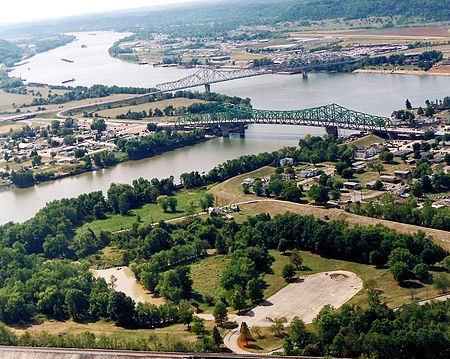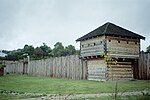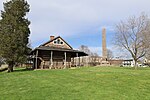Point Pleasant, West Virginia
Cities in Mason County, West VirginiaCities in West VirginiaCounty seats in West VirginiaPoint Pleasant, West VirginiaPopulated places on the Kanawha River ... and 2 more
Use mdy dates from July 2023West Virginia populated places on the Ohio River

Point Pleasant is a city in and the county seat of Mason County, West Virginia, United States, at the confluence of the Ohio and Kanawha Rivers. The population was 4,101 at the 2020 census. It is the principal city of the Point Pleasant micropolitan area extending into Ohio. The town is best known for the Mothman, a purported humanoid creature reportedly sighted in the area that has become a part of West Virginia folklore.
Excerpt from the Wikipedia article Point Pleasant, West Virginia (License: CC BY-SA 3.0, Authors, Images).Point Pleasant, West Virginia
Mason Boulevard,
Geographical coordinates (GPS) Address Nearby Places Show on map
Geographical coordinates (GPS)
| Latitude | Longitude |
|---|---|
| N 38.8575 ° | E -82.128611111111 ° |
Address
Mason Boulevard
Mason Boulevard
25550
West Virginia, United States
Open on Google Maps









